
The final post in our week of articles about the Queen’s coronation jewelry focuses on a pair of items that have always fascinated me: the coronation bracelets, or armills. Here’s some of the fascinating history behind these symbolic gold cuff bracelets.
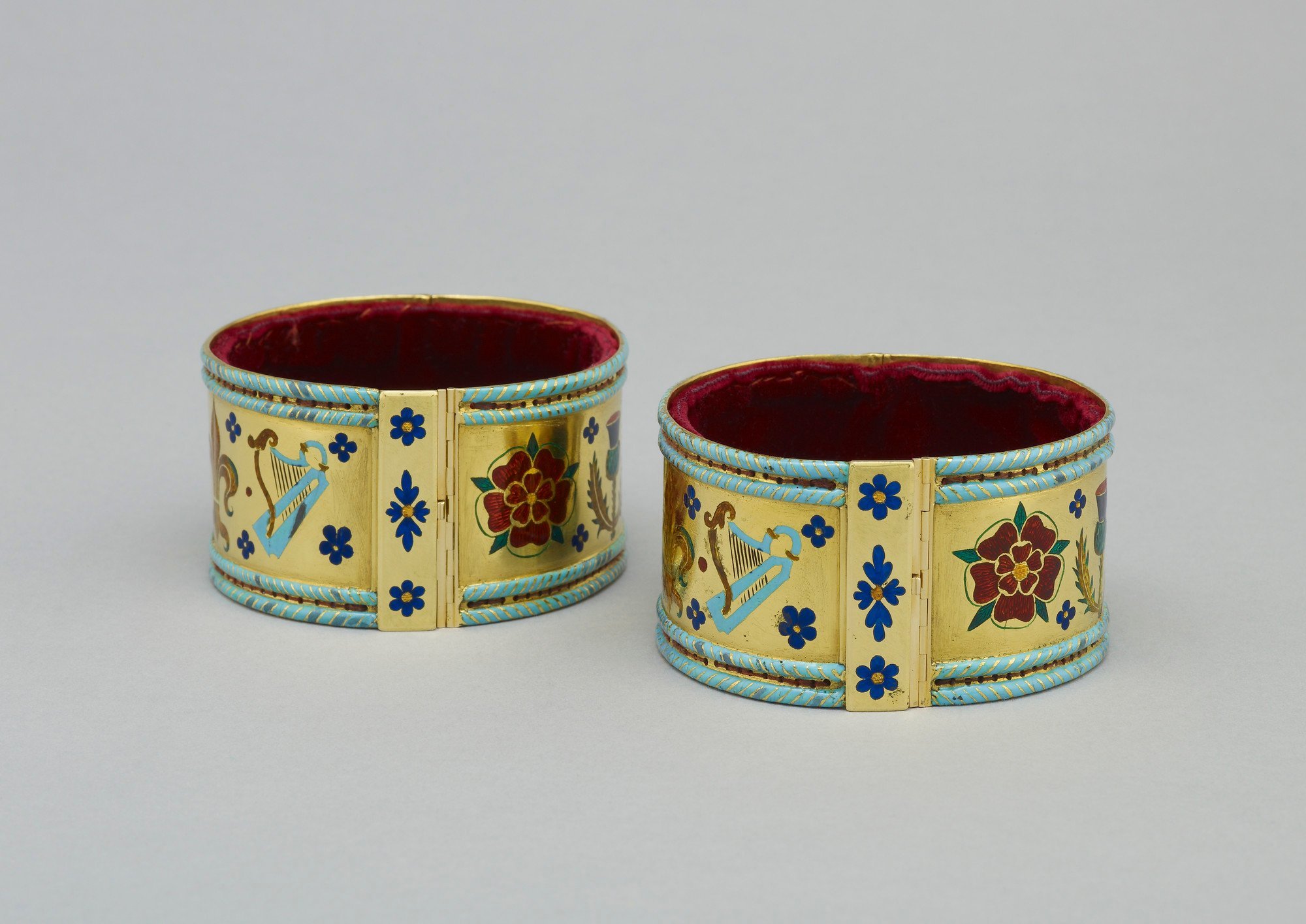
British coronations incorporated the use of armills for centuries. The coronation service includes text calling the armills the “bracelets of sincerity and wisdom,” symbolic of the Lord’s protection of the monarch and of the monarch’s bond with the people. Pre-Restoration sovereigns wore a pair of gold bracelets set with pearls and rubies during their coronations. These were lost during the Commonwealth period of the 1650s, and, along with most of the rest of the coronation regalia, they had to be remade ahead of the coronation of King Charles II in 1661.
The bracelets pictured above are the velvet-lined armills made for that ceremony, procured by Sir Robert Vyner. Rather than setting the new gold armills with precious gems, the goldsmith who made them decorated them with enamel instead (likely a cost-saving measure). These enamel decorations feature several national symbols, including Tudor roses, Irish harps, and Scottish thistles. (This was the period when British monarchs also regularly claimed the French throne, so the fleur-de-lis is featured in the decorations, too.)
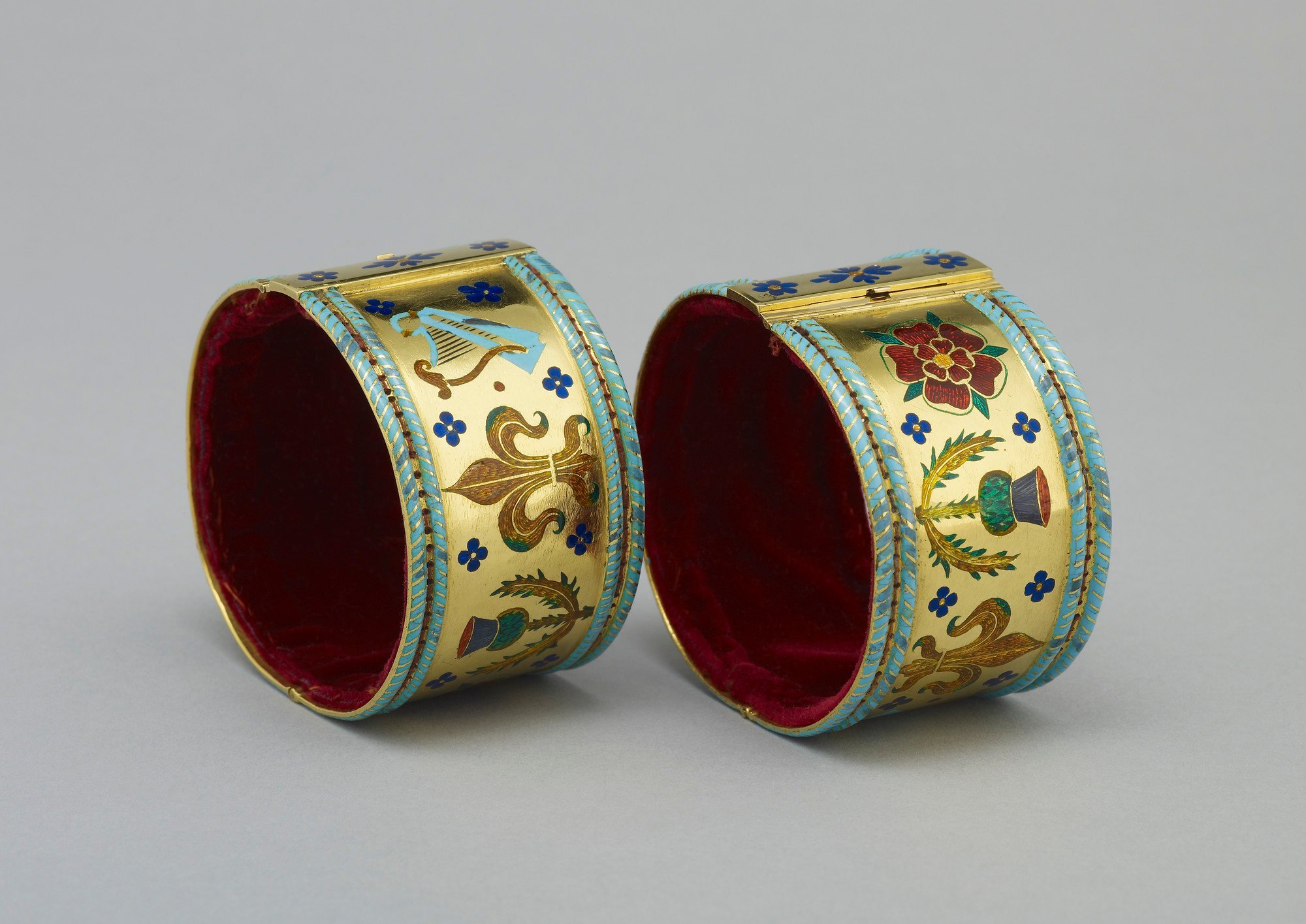
Oddly enough, though, the armills don’t seem to have actually been used in King Charles II’s coronation—or in any other coronation afterward. Though the Royal Collection argues that the bracelets “were used at every coronation from 1661 until 1953,” other sources, including the work of historian Anna Keay, cast significant doubt on that claim. Keay writes, “Despite the trouble and expense taken to remake the bracelets, they seem never to have featured prominently—if at all—in the coronation.” This may be due to a misunderstanding of the text for the service. Keay states that “officials carefully ensured the King received the long fabric stole called the ‘armilla,’ but in a confusion over terminology omitted to present the bracelets (properly the ‘armillae’) that had once been attached to it.”
Contemporary reports from more recent coronations appear to support Keay’s assessment that the armills were confused with the stole for centuries. In July 1911, after the coronation of King George V, the coronation robes were placed on display at the Imperial Institute. The Times wrote that the display of robes included “The King’s Supertunica, Armill, and Pallium.” Newspaper reports from King George VI’s coronation in May 1937 also highlight the issue. For example, the Montreal Gazette noted, “There was the investiture by the Dean of the armill and royal robe. The former really means a bracelet, a very ancient regal ornament. King Saul wore one when his reign came to its gloomy end in battle. The armill, though, is nowadays a stole and the royal robe corresponds to a chausible or cope.”

In 1953, the 16th Duke of Norfolk, who as Earl Marshal was in charge of organizing the coronation of Queen Elizabeth II, sought to end the confusion and restore the armill bracelets to their rightful place in the ceremony. On April 15, 1953, at a luncheon for Commonwealth journalists, the Duke announced that the armills would once again be incorporated into the ceremony. According to the Windsor Star, he said that the bracelets “probably not been used since the coronation of Edward VI in 1547.” The suggestion to add the armills back to the service had come from the Archbishop of Canterbury, Geoffrey Fisher. On hearing the idea, Australia’s prime minister, Robert Menzies, proposed that instead of using the 1661 armills, a new set of bracelets should be produced for the coronation as a gift from the Commonwealth of Nations. The other Commonwealth countries agreed, and they invited the United Kingdom to join them in the present.
The Guardian wrote shortly afterward that the new armills, made by Garrard, were “broad bracelets of gold, quite plain except for two narrow bands engraved upon them, and for a clasp made in the shape of a Tudor rose” and “lined with red velvet.” (Several hallmarks are also imprinted on each bracelet, including a special hallmark for the Queen’s coronation.) The report also noted the existence of the 1661 armills, writing that the bracelets were “made for the coronation of Charles II but never used for a reason that so far has eluded research.”
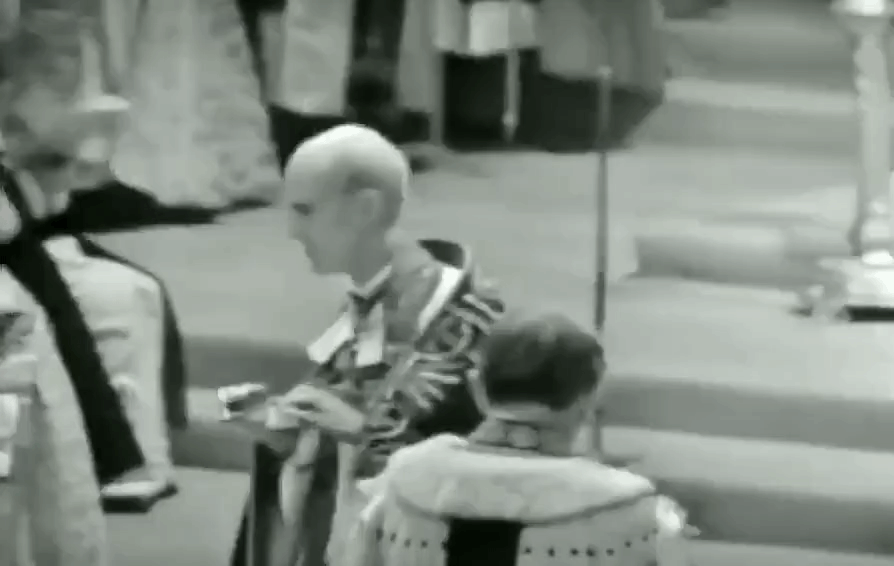
During the coronation service, on June 2, 1953, the armills were presented to the Queen as part of the ninth section of the ceremony, after the presentation of the spurs and the sword, and just before the presentation of the stole and robe and the delivery of the orb. The Dean of Westminster, Alan Don, delivered the bracelets to the Archbishop of Canterbury, Geoffrey Fisher.
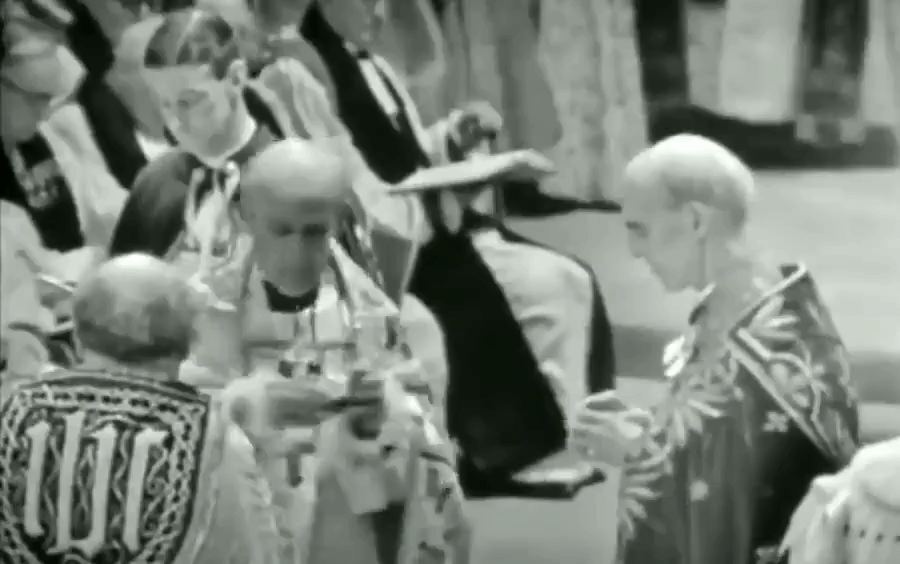
The Archbishop placed the bracelets on the Queen’s wrists, first the right, then the left. The armills are hinged, allowing Fisher to open each one before clasping it on the Queen’s wrist.
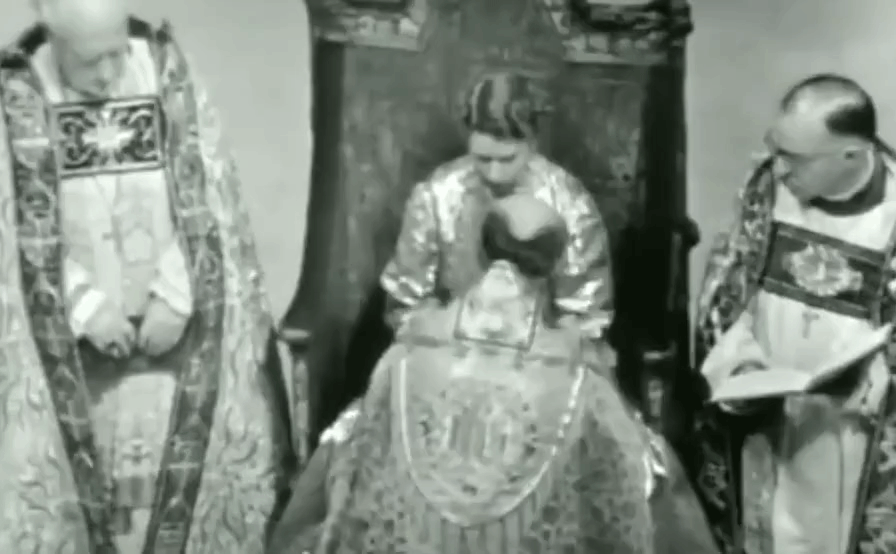
The Queen adjusted the armill on her right wrist slightly as the Archbishop stepped back. He prayed, “Receive the Bracelets of sincerity and wisdom, both for tokens of the Lord’s protection embracing you on every side; and also for symbols and pledges of that bond which unites you with your Peoples: to the end that you may be strengthened in all your works and defended against your enemies both bodily and ghostly, through Jesus Christ our Lord. Amen.”
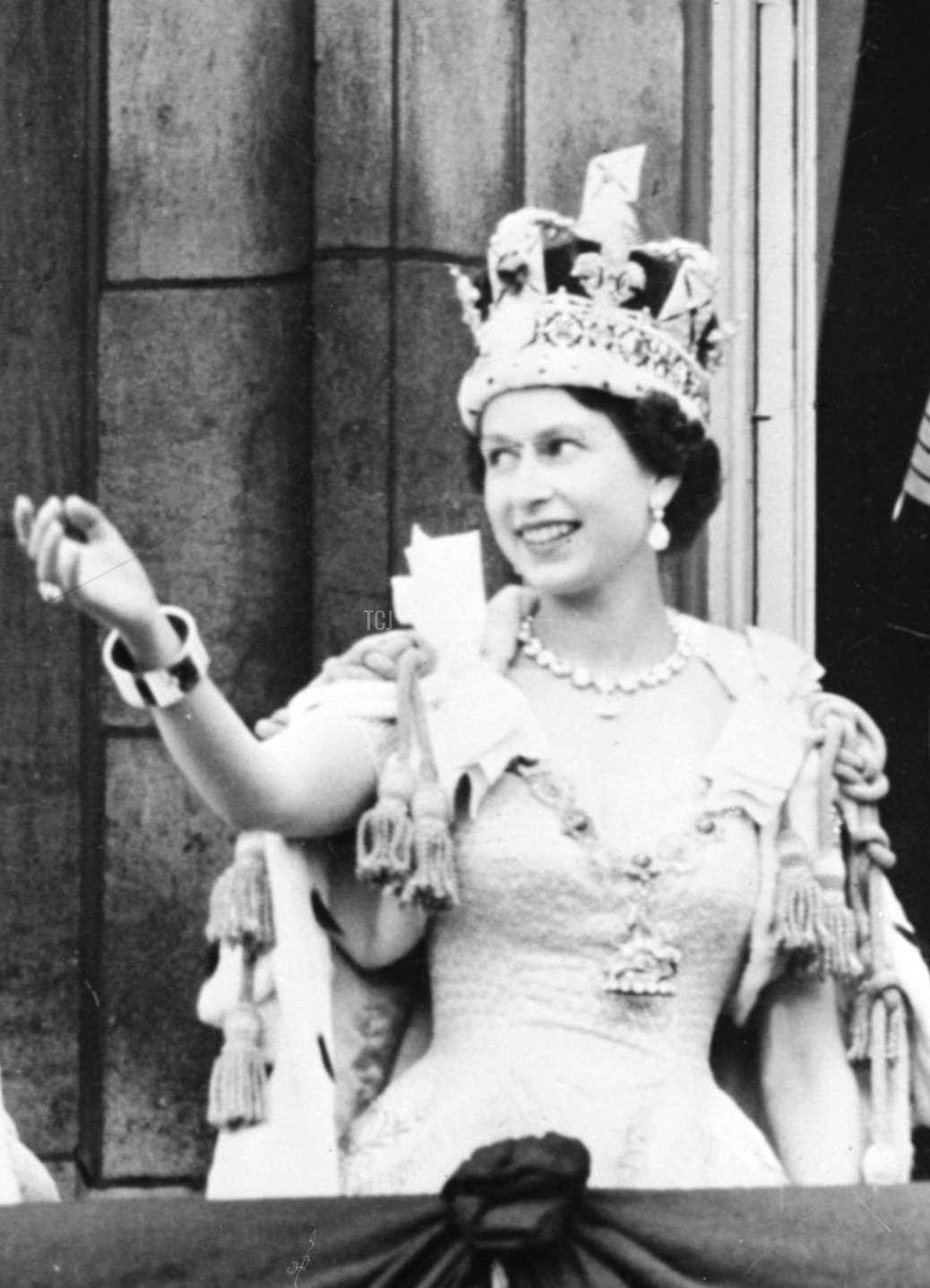
I’ve always loved the way that the shining gold armills look on the Queen’s wrists in the photos from the day. The velvet lining makes it appear that they’re magically hovering over her arms. I’d imagine we’ll see these armills used in subsequent coronations, as long as they fit the wrists of subsequent sovereigns. They certainly seem to have delivered long-lasting sincerity, wisdom, and protection to the Queen for whom they were made.
Leave a Reply
You must be logged in to post a comment.